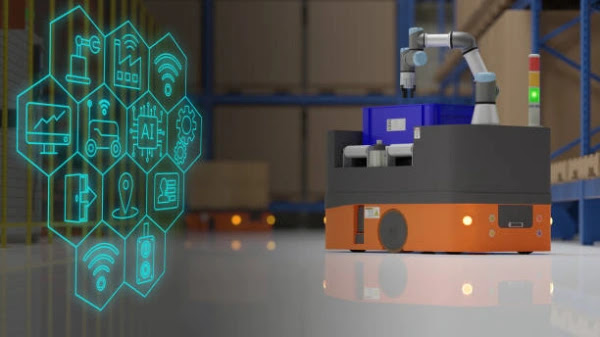Featured
- Get link
- X
- Other Apps
Simplify Partner Engagement: A Guide for Manufacturers
Introduction

In the dynamic landscape of modern manufacturing, partner
engagement plays a pivotal role in shaping the success and longevity of
businesses. For manufacturers, the ability to effectively collaborate and align
with various partners, from suppliers to distributors, holds the key to
achieving operational excellence, product innovation, and competitive
advantage.
This guide is your compass in the complex terrain of partner
engagement. In an era marked by technological advancements, global supply
chains, and shifting market demands, manufacturers are faced with the
ever-growing challenge of simplifying and enhancing their partner
relationships. We understand these challenges, and that's why we've crafted
this comprehensive guide to help manufacturers like you navigate this intricate
journey.
The Importance of Partner Engagement for Manufacturers
At the heart of every manufacturing operation lies a network of relationships, both upstream and downstream. Suppliers provide raw materials, components, and critical resources, while distributors ensure products reach their intended markets. Collaborative engagement with these partners is what keeps the manufacturing wheel turning, and it's what often sets industry leaders apart from the competition.
Effective partner engagement isn't just a desirable
component of success; it's a strategic imperative. It impacts production
efficiency, supply chain reliability, product quality, and even the ability to
innovate and stay ahead of market trends. In this guide, we'll explore how
simplifying partner engagement can yield significant benefits, streamline
operations, and fuel business growth.
Purpose of the Guide
The purpose of this guide is two-fold. First, it aims to
demystify the intricacies of partner engagement for manufacturers, breaking
down complex concepts and strategies into practical, actionable steps. Second,
it provides a roadmap for manufacturers to streamline and enhance their partner
relationships, leading to increased efficiency, reduced costs, and improved
product and service delivery.
Whether you're a seasoned manufacturing professional looking
to refine your approach or a newcomer seeking guidance on establishing
effective partner relationships, this guide is designed to offer valuable
insights and proven strategies to simplify the partner engagement process.
In the following sections, we'll delve into the fundamentals
of partner engagement, explore strategies to streamline your processes, share
real-world case studies, and equip you with the tools and knowledge to overcome
common challenges. By the end of this guide, you'll have a clear vision of how
to simplify partner engagement and make it a cornerstone of your manufacturing
success.
So, let's embark on this journey together as we unravel the
secrets to Simplify Partner Engagement: A Guide for Manufacturers.
A. Importance of Partner Engagement for Manufacturers
The section on the importance of partner engagement for
manufacturers should provide a comprehensive understanding of why effective
partner engagement is crucial in the manufacturing industry. This section
should make a strong case for the significance of partner engagement. Here's
how you might structure this section:
A. Importance of Partner Engagement for Manufacturers
In the realm of manufacturing, where efficiency, quality,
and competitiveness are paramount, partner engagement emerges as a linchpin
that can either propel a company to success or drag it into the abyss of
inefficiency. This section delves into the critical reasons why partner
engagement holds a central position in the manufacturing landscape.
1. Enhancing Operational Efficiency
In today's complex manufacturing environments, efficiency is
the name of the game. Manufacturers are constantly striving to streamline their
operations and optimize resource utilization. Partner engagement is key to
achieving this. When manufacturers collaborate closely with their suppliers,
distributors, and other partners, they can coordinate processes, minimize
bottlenecks, and reduce production lead times. This, in turn, leads to cost
savings, faster product delivery, and higher customer satisfaction.
2. Ensuring Supply Chain Resilience
A resilient supply chain is a fundamental requirement in
manufacturing. Partner engagement strengthens supply chain resilience by
fostering close relationships with key partners. Manufacturers who maintain
open lines of communication and collaboration with their suppliers can respond
more effectively to disruptions, whether they be due to natural disasters,
market shifts, or other unforeseen events. In an era where supply chain
disruptions can be financially crippling, partner engagement acts as an
insurance policy for business continuity.
3. Facilitating Product Innovation
The manufacturing industry is marked by rapid technological
advancements and shifting consumer preferences. Manufacturers must continually
innovate to stay competitive. Effective partner engagement extends beyond
operational efficiency and includes the exchange of ideas and information.
Collaborating with partners can lead to innovation in product design,
materials, and producton processes. It opens doors to fresh insights, promoting
creativity and adaptability.
4. Improving Product Quality
Product quality is non-negotiable in manufacturing. Partner
engagement plays a vital role in ensuring consistency and excellence in product
quality. Close collaboration with suppliers allows manufacturers to set and
monitor quality standards, conduct joint quality checks, and swiftly address
any quality issues. It results in fewer defects, reduced rework, and enhanced
reputation for deliverin top-notch products.
5. aining a Competitive Edge
In a globalized market, competition is fierce. Manufacturers
that excel in partner engagement can outperform competitors by building more
robust networks and responding faster to market changes. Effective partner
engagement enables quicker time-to-market, customized solutions, and greater
adaptability, all of which contribute to a competitive advantage.
6. Meeting Environmental and Regulatory Standards
Sustainability and compliance with environmental and
regulatory standards are increasingly important in the manufacturing sector.
Partner engagement helps manufacturers navigate the complex web of regulations,
implement eco-friendly practices, and share responsibility for reducing the
environmental impact of operations.
7. Boosting Customer Satisfactio
Ultimately, the importance of partner engagement revolves
around the end customer. When manufacturers collaborate seamlessly with their
partners, it leads to a superior customer experience. Timely deliveries,
high-quality products, and tailored solutions result in satisfied customers who
are more likely to become repeat buyers and brand advocates.
- Get link
- X
- Other Apps

